Characteristics of Kenyan AA grade coffee beans introduction to the taste of Kenya washing aa hand flushing flavor
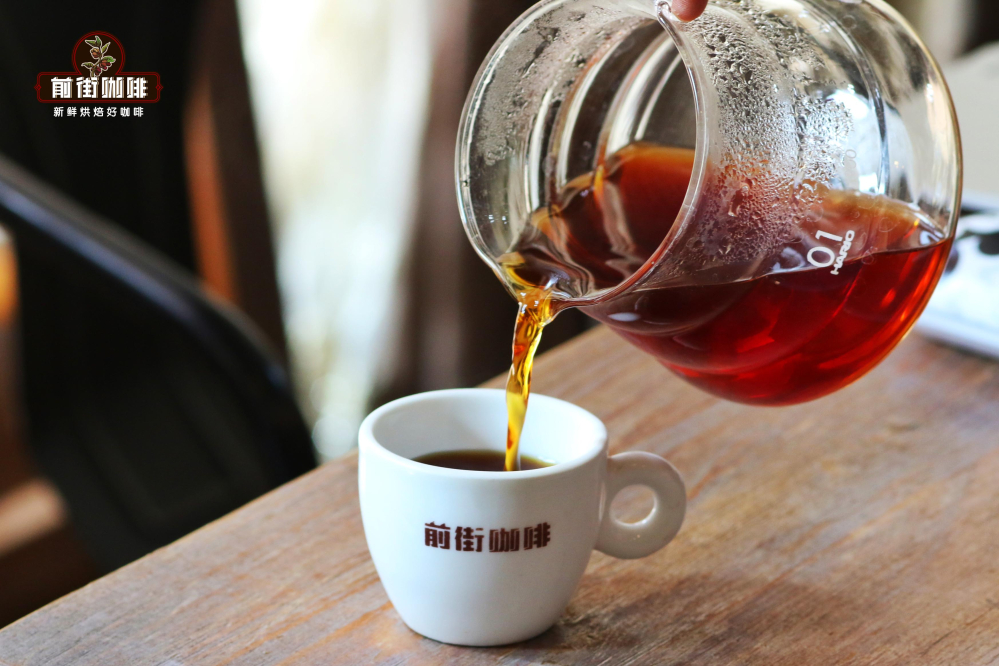
The main feature of Kenyan coffee is its distinctive fruity aroma, especially with the flavor of small tomatoes and dark berries. High-quality Kenyan coffee has a multi-layered taste, juice-like acidity, complex aromas of grapefruit and wine, and a moderate mellowness, making it a favorite individual coffee bean for many in the industry. The home-baked Asaria coffee beans on Qianjie are from Kenya, selected from the AA TOP grade and washed for 72 hours, showing a typical "Kenyan flavor".
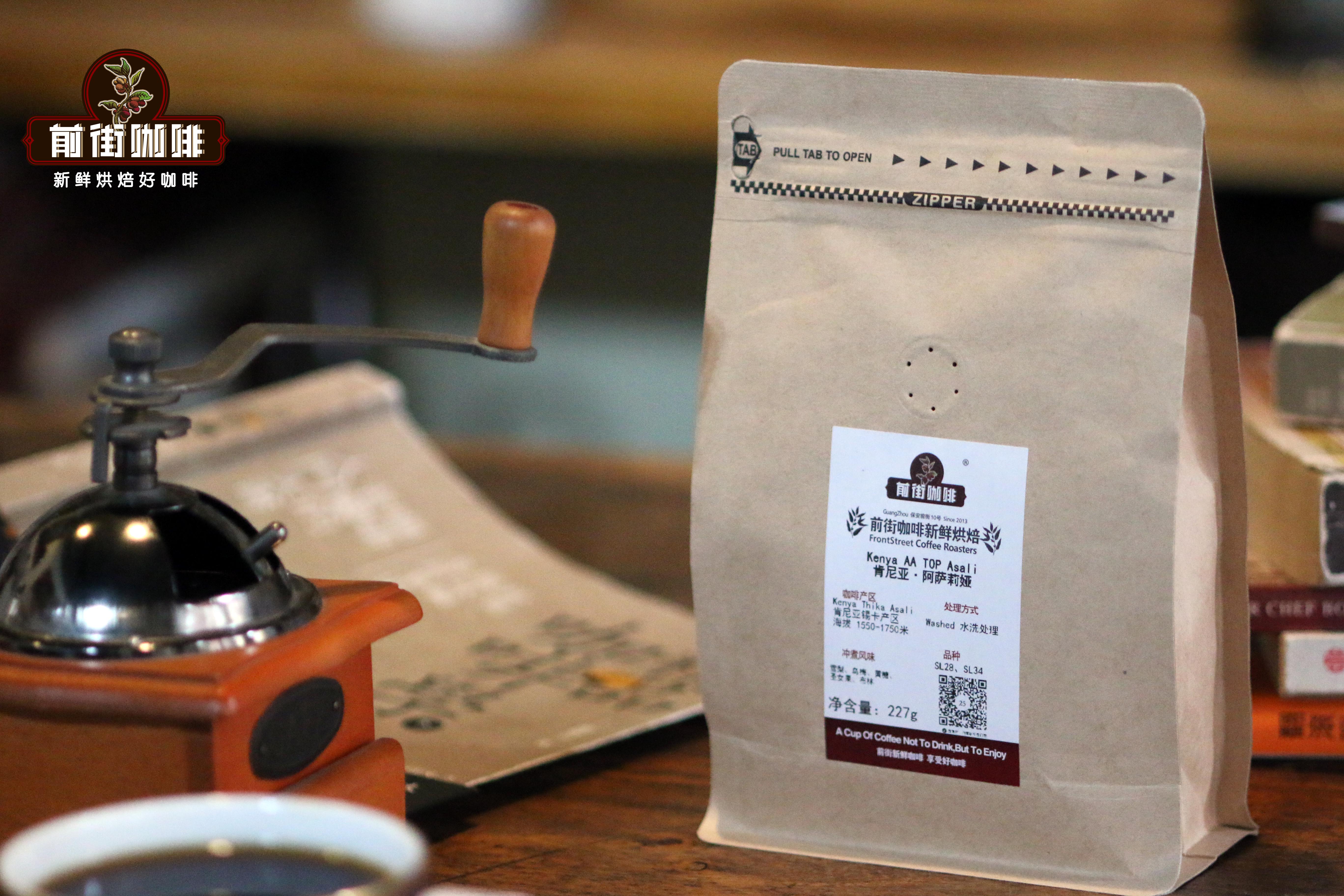
Raw coffee beans in Kenya are classified and graded according to their size, color, shape and density. Kenyans believe that the size of coffee beans is the most critical factor in quality, and coffee beans with larger particles and more uniform shape are more conducive to the transformation and accumulation of aromatic substances during roasting. As a result, the largest and best Kenyan coffee beans are rated Kenyan AA, using a sieve with holes more than 1/4 inches in diameter and a particle size greater than 18 mesh or 7.22mm.
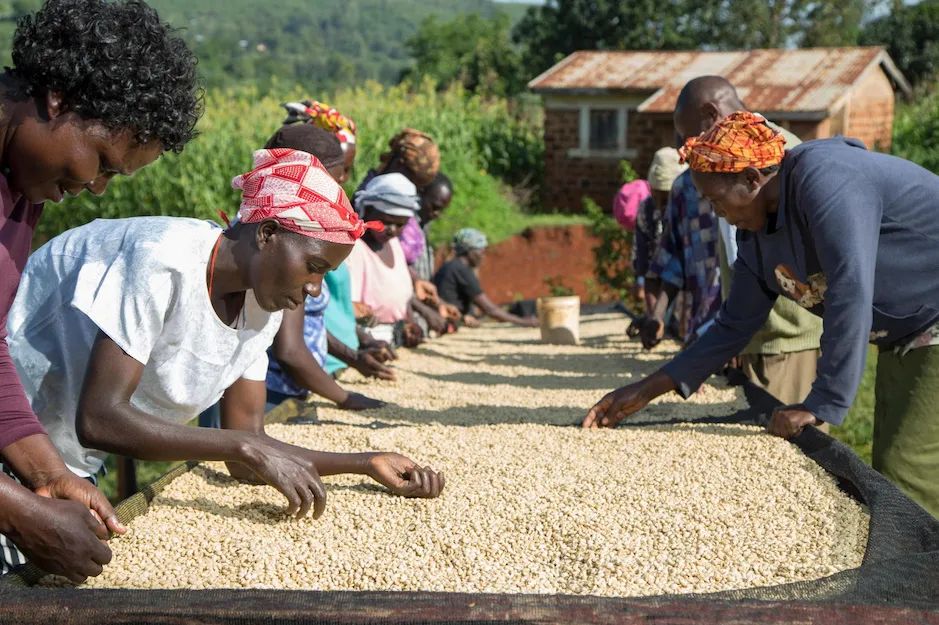
Although nearby is Ethiopia, the birthplace of coffee, Kenya's coffee industry is relatively late, and the first coffee beans they harvested were in the late 19th century. When coffee was first introduced into Kenya, it was still a British colonial country. In order to earn foreign exchange, the British colonial government widely promoted the cultivation of coffee in Kenya, harvested coffee beans and shipped them to London for export. It was not until 1933, when Kenya passed a coffee law and established a coffee committee, that coffee sales were transferred back to Kenya. After independence in 1963, local farmers in Kenya also learned the professional knowledge of coffee cultivation for a long time. Seed selection, planting, picking, post-treatment, grading and other aspects have created their own high-standard model.
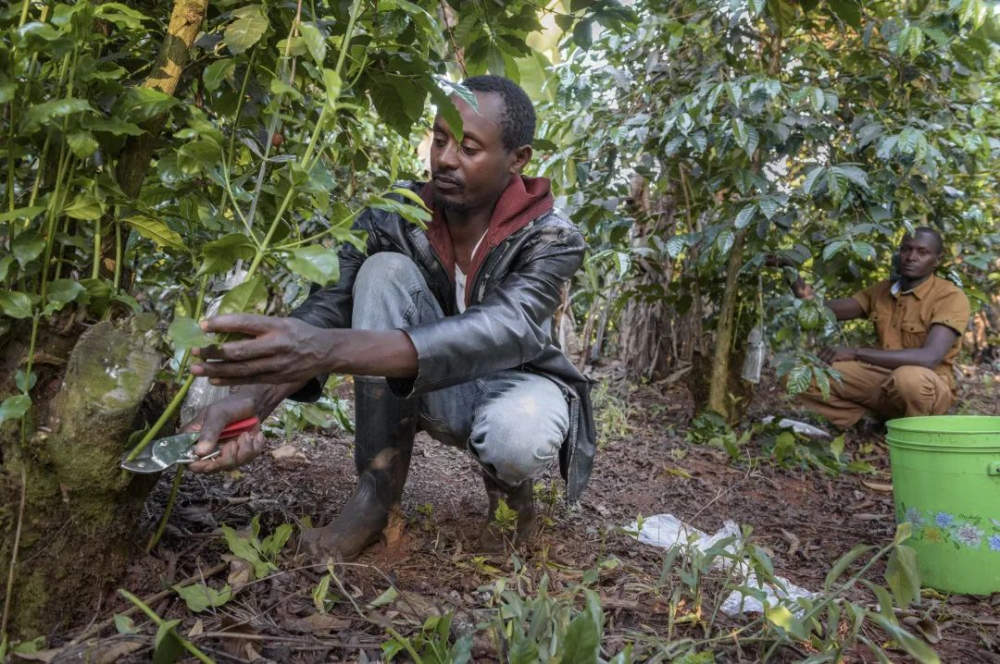
Kenya is located along the equator, and the plateaus around Mount Kenya and the smaller areas around Mount Elgon provide a microclimate that is very suitable for growing coffee. With deep and fertile volcanic soil and high elevations, the well-drained geology is particularly suitable for "delicate" Arabica coffee. At the same time, the Kenyan soil contains more acidic substances, and the pH value is between 5.3 and 6.0, which makes the coffee flavor bright and solid. In addition, the average annual rainfall is between 1000 mm and 2000 mm, which is sufficient and evenly distributed in two distinct rainy seasons. Very conducive to the growth of crops, in addition to coffee, the local people will also produce tea.
The unique BlackBerry aroma of Kenyan coffee comes not only from the phosphoric acid rich in Kenyan soil, but also from Kenya's most famous K72 water washing treatment. The biggest difference with Central and South America is that the Kenyan water washing treatment uses double fermentation, which is our common K72 water washing treatment.
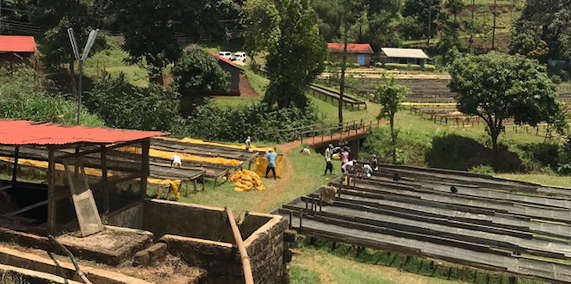
After the coffee was harvested, the best quality coffee berries were selected for peeling and fermentation. the fermentation time was 24 hours, and then washed with clean water after 24 hours. Then, it was fermented again with clean water for 24 hours, then washed, and repeated 3 times for 72 hours. Qianjie Coffee believes that K72 water washing will improve the acidity and cleanliness of coffee beans compared with conventional water washing.
This Kenyan coffee from Qianjie has the flavor of black berries and drupes. In order to retain more fruity aroma, Qianjie roasters choose light roasting. Qianjie through the cup test comparison, dry aroma is small tomato, black plum, caramel aroma, entrance dark drupes, such as Brin, plum, apricot taste, acid saturation. Therefore, Qianjie is also trying to retain more fruity flavor of Kenyan AA.
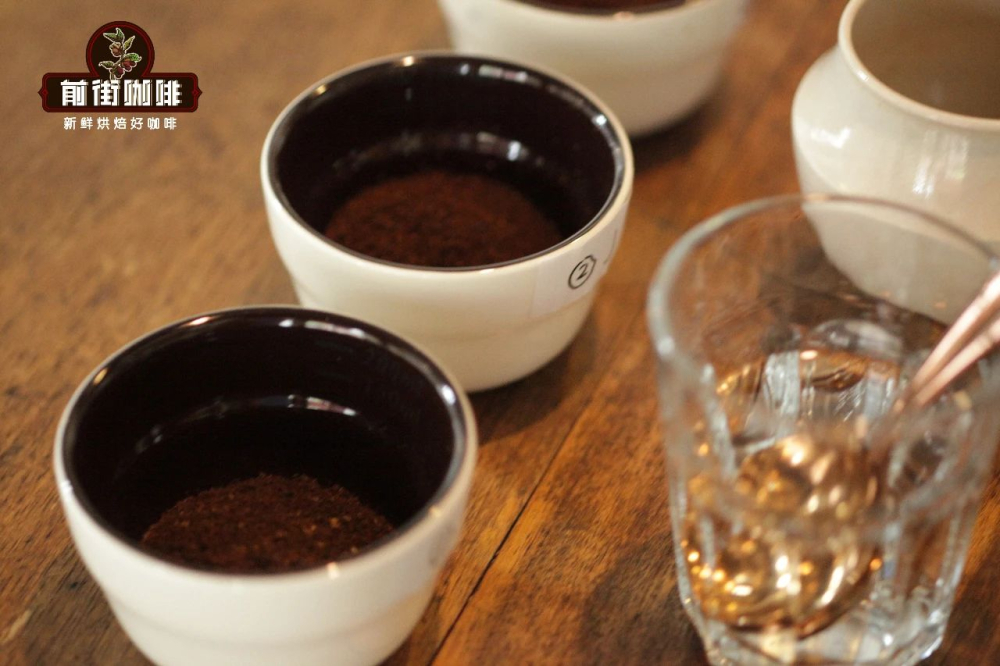
The hand flushing parameters of Kenyan coffee beans on the front street:
Filter cup: V60
Water temperature: 92 degrees Celsius
Powder content: 15g
Ratio of powder to water: 1:15
Degree of grinding: fine sugar size (20 sieve bowl sieve powder to 80%)
Light roasted coffee beans retain more flower and fruit aromas of high altitude coffee beans. Compared with medium and deep roasting, light roasted coffee beans have a more compact internal structure, which requires higher water temperature and finer grinding to better stimulate the flavor substances of coffee. Here, Qianjie will be extracted with hot water of 92-93 degrees Celsius, and the grinded Qianjie will use a standard sieve 20 with a pass rate of 80%.
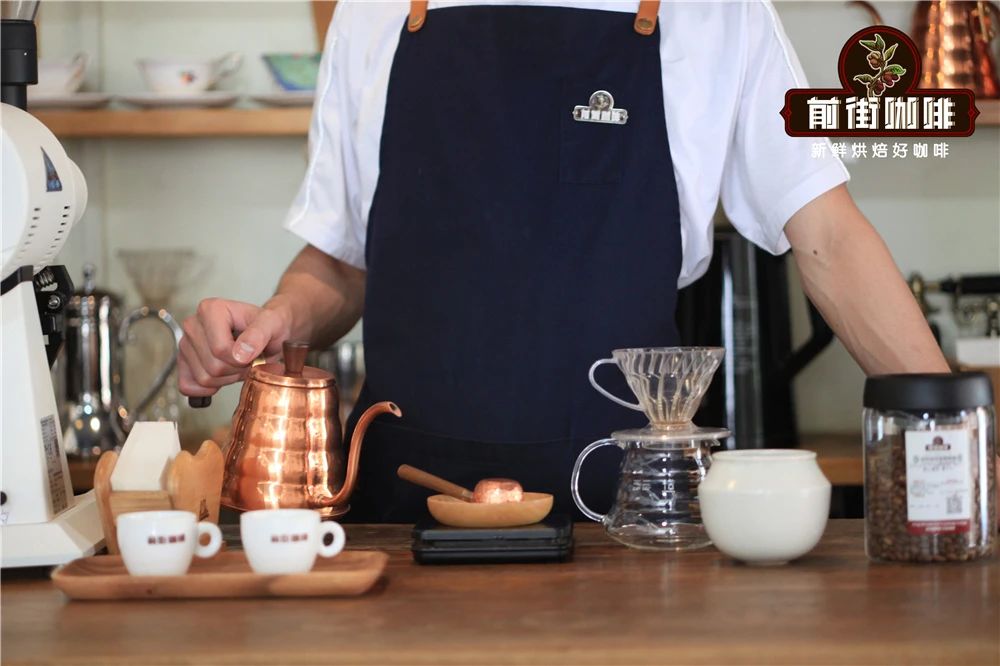
In the selection of filter cups, Qianjie baristas are used to use resin V60 filter cups to extract medium and shallow roasted coffee beans. The body of the V60 filter cup has a large round hole connecting the diversion ribs at the top and the bottom and the center, which speeds up the flow rate of the water, while the spirally shaped exhaust trough is designed to lengthen the flow path and increase the contact time of coffee powder and hot water. each flow of water converges along the groove to the center of the filter cup, the pressure on the coffee powder is concentrated, and the coffee extracted is more layered.
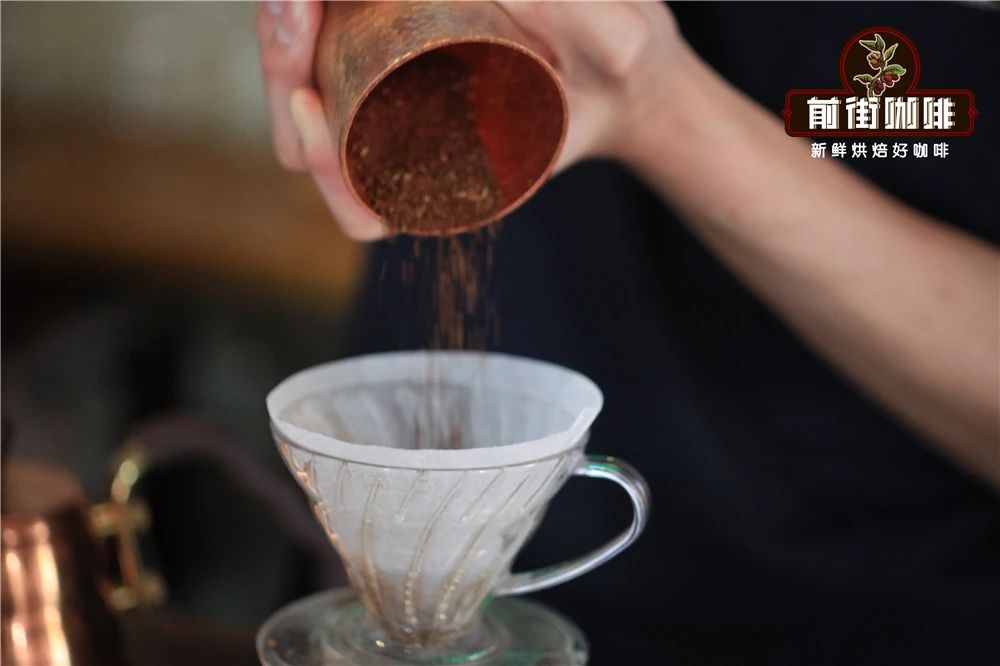
First pour 15 grams of coffee powder into the filter cup to clear the weight, the first stage is injected with 30g water for steaming for 30 seconds, at the same time start timing, the whole small flow center injection begins to circle outward, pay attention to the need to moisten the whole powder layer. In the second stage, 120g of water is injected with a larger flow of water, in order to raise the entire powder layer, and the water column needs to be injected vertically and evenly, and the chronograph shows 150g, which is finished in about 55 seconds. When the liquid level drops to half of the position, start to use a small flow around the small circle to inject 90 grams of the third section, try to control the flow is too large, easy to break the coffee powder layer and cause insufficient extraction. The final amount of water injection is 240 grams, and the completion time of drip filtration is about 2 minutes and 10 seconds. After removing the filter cup, shake the coffee liquid in the sharing pot and start tasting.
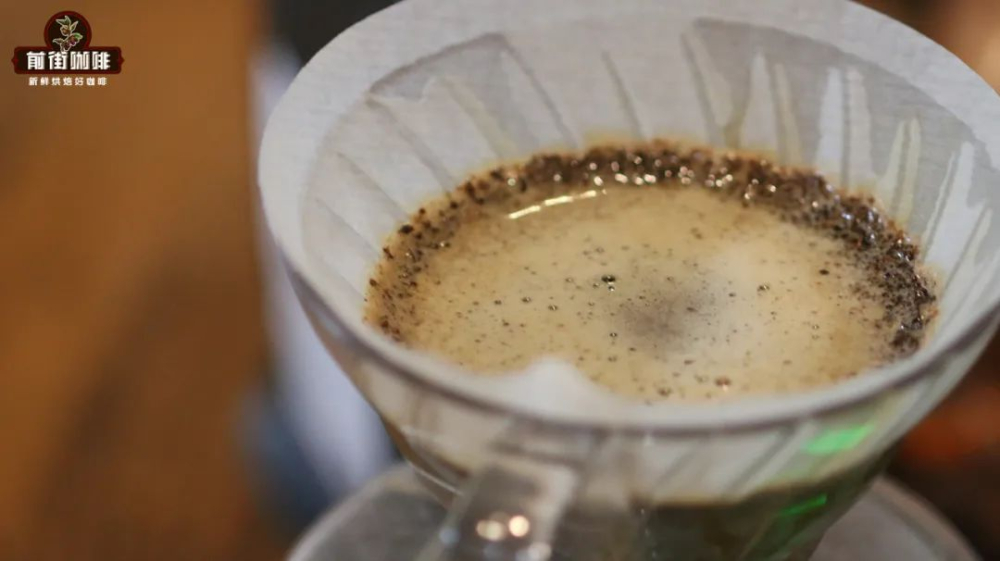
This Kenyan Asaria coffee tastes like black brin, black plum and other dark fruits, while the medium temperature is the thick sour and sweet taste of apricot and drupe, with a round black tea finish.
Professional coffee knowledge exchange more coffee bean information please follow the coffee workshop (Wechat official account cafe_style)
For more boutique coffee beans, please add private Qianjie coffee on Wechat. WeChat account: qjcoffeex
Important Notice :
前街咖啡 FrontStreet Coffee has moved to new addredd:
FrontStreet Coffee Address: 315,Donghua East Road,GuangZhou
Tel:020 38364473
- Prev
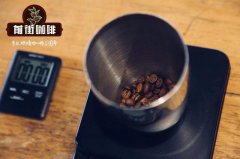
Kenyan Neri coffee features Kenyan Nieri coffee beans as sweet as fruit
Professional coffee knowledge exchange more coffee bean information please follow the coffee workshop (Wechat official account cafe_style) front street-Kenya Neri coffee characteristics introduction Kenya is a country that pays great attention to coffee quality, in the coffee industry research and development can be said to spare no effort, many local Canon beans have highly specialized production knowledge, enough to grow such excellent quality
- Next

The origin of Kenyan coffee beans A brief introduction to the flavor characteristics of Kenyan coffee beans
Professional coffee knowledge exchange more coffee bean information please follow the coffee workshop (Wechat official account cafe_style) front street-Kenya coffee producing characteristics introduction about the characteristics of Kenyan coffee, I believe that everything you have drunk can be dumped. Kenya, as the second largest coffee producer in Africa, not only has the output, but also the quality of the coffee is excellent, which is why.
Related
- Beginners will see the "Coffee pull flower" guide!
- What is the difference between ice blog purified milk and ordinary milk coffee?
- Why is the Philippines the largest producer of crops in Liberia?
- For coffee extraction, should the fine powder be retained?
- How does extracted espresso fill pressed powder? How much strength does it take to press the powder?
- How to make jasmine cold extract coffee? Is the jasmine + latte good?
- Will this little toy really make the coffee taste better? How does Lily Drip affect coffee extraction?
- Will the action of slapping the filter cup also affect coffee extraction?
- What's the difference between powder-to-water ratio and powder-to-liquid ratio?
- What is the Ethiopian local species? What does it have to do with Heirloom native species?

